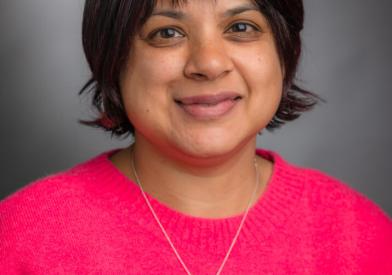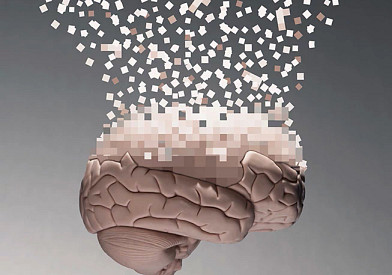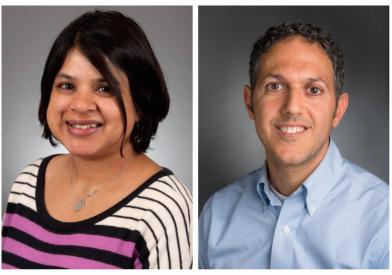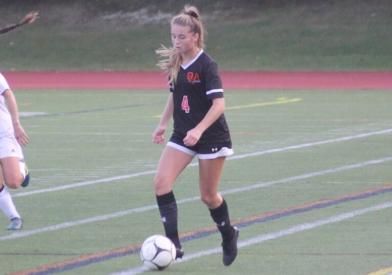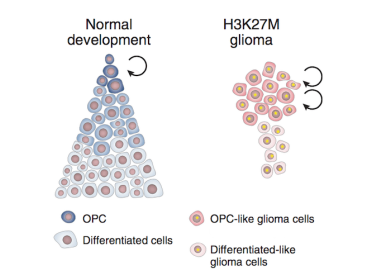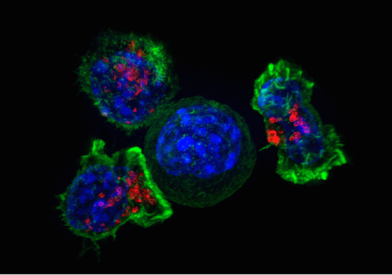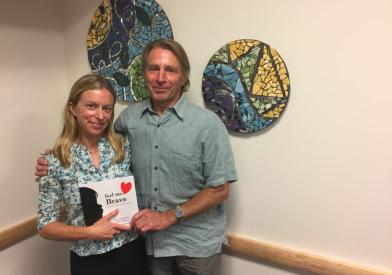A glioma is a brain tumor originating from the glial cells that support and nourish neurons in the brain.
Gliomas account for about 25 percent of childhood cancers. Most gliomas are highly treatable and curable. Pilocytic astrocytoma, the most common type of glioma, has more than a 90 percent cure rate.
At Dana-Farber/Boston Children's Cancer and Blood Disorders Center, we bring together experts in pediatric neurology, pathology, and surgery in our Brain Tumor Center. The combined expertise offers patients access to one of the largest and most experienced pediatric glioma programs in the nation.
Gliomas are divided into four grades, depending on the tumor cells' appearance under a microscope. The higher a tumor's grade number, the more severe it is.
- Low-grade gliomas:
- Grade 1 (Pilocytic)
- Grade 2 (Fibrillary)
- High-grade gliomas:
- Grade 3 (Anaplastic)
- Grade 4 (Glioblastoma multiforme or GBM)
We diagnose and treat the full range of childhood gliomas, including:
- Anaplastic astrocytoma
- Angiocentric glioma
- Astrocytoma
- Diffuse intrinsic pontine glioma (DIPG) (a brainstem glioma)
- Dysembryoplastic neuroepithelial tumor (DNET or DNT)
- Ganglioglioma and glial neuronal tumors
- Glioblastoma multiforme (GBM)
- Gliomatosis cerebri
- Gliosarcoma
- Low-grade glioma
- Oligodendroglioma
- Optic nerve (pathway) glioma
- Pilocytic astrocytoma
- Pleomorphic xanthoastrocytoma (PXA)
- Tectal glioma
- Thalamic and hypothalamic astrocytoma
Symptoms of Childhood Glioma
As a glioma grows, it presses on surrounding healthy parts of the brain, affecting their function. The symptoms of pediatric gliomas depend significantly on the tumor's size and location.
Some of the most common symptoms of pediatric gliomas include:
- Headache, particularly in the morning or made better by vomiting
- Severe or frequent vomiting without other signs of gastrointestinal illness
- Vision problems, such as double vision, blurry vision, or loss of vision
- Difficulty walking or balancing
- Seizures
- Weight gain or loss
- Premature puberty
- Clumsiness
- Confusion
- Sleepiness
- Changes in behavior
How We Diagnose and Treat Childhood Glioma
Our doctors take the first step in treating children by reviewing their medical history and performing physical and neurological exams. Your doctor may also order various diagnostic tests to form an accurate diagnosis.
Testing may include imaging studies, biopsy, EEG, and lumbar puncture. We also have access to New England’s only pediatric PET scan and PET fusion imaging, which provides precise anatomical images that guide our treatment decisions.
After the medical team completes all tests, your child’s doctor will discuss the results and most effective treatment options with your family.
We personalize each child’s treatment based on the tumor’s type, stage, and location. While some therapies will treat the tumor, we may use others to manage disease complications or treatment side effects.
Treatments may include:
- Surgery: Surgery to remove as much of the tumor as possible.
- Chemotherapy: We may use chemotherapy, a drug treatment that aims to destroy or shrink cancer cells, either before or after treatment.
- Radiation therapy: We typically use radiation to treat high-grade gliomas. The goal is to eliminate any remaining tumor cells after surgery or treat tumors that can’t be removed with surgery.
- Targeted therapy: Targeted therapy, also called precision medicine, works by tailoring treatment to the genetic characteristics of the cancer in an individual child.
We offer extensive support before, during, and after treatment. Once treatment is complete, we continue to care for children and their families through our pediatric cancer survivorship programs, including the Stop & Shop Family Pediatric Neuro-Oncology Outcomes Clinic for pediatric brain tumor survivors. These services address health and social issues, ranging from motor function evaluation and physical therapy to return-to-school and learning programs.

